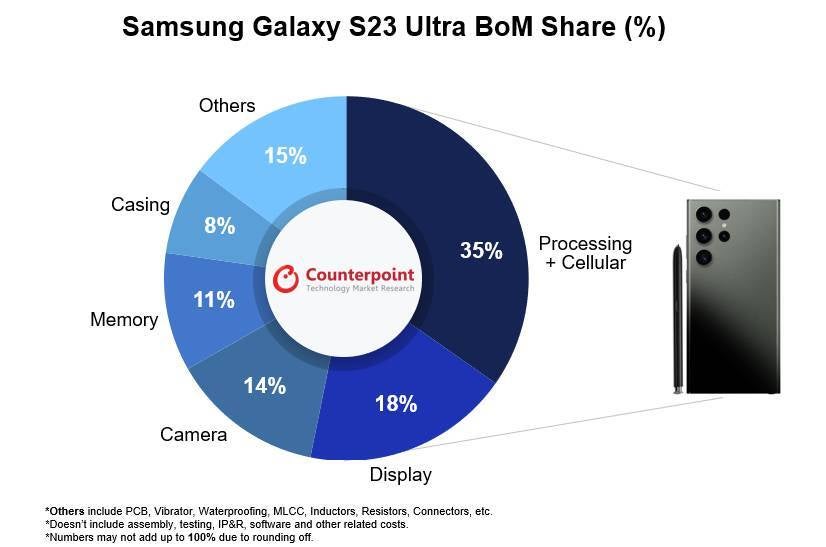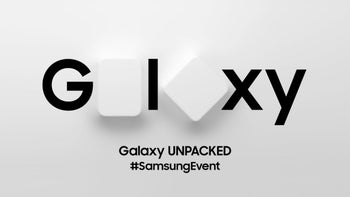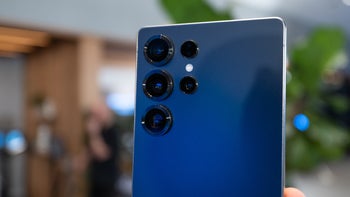Components make up only a small fraction of Galaxy S23 Ultra's $1,200 price tag

The highest-end Galaxy S series model, the Galaxy S23 Ultra, starts at $1,199.99 for the model with 8GB of RAM and 256GB of storage. That's quite a steep amount but the price didn't stop the phone from becoming the fifth best-selling smartphone in the first quarter of 2023. According to a bill of materials (BoM) analysis done by research firm Counterpoint, the components cost is 39 percent of the price of the phone.

The chipset and cellular components make up the bulk of the cost, representing 35 percent of the total BOM. The display is the second most expensive part, accounting for 18 percent of the total BOM. Other costly components include the camera (14 percent), memory (11 percent), and casing (8 percent).
Other elements such as PCB, waterproofing, vibrator, and inductors come in at 15 percent of the BOM.
The BOM cost of the Galaxy S23 Ultra is estimated to be $469. This is not the same as the total cost of producing the phone. A BOM just includes the materials and parts required to manufacture a product.
It doesn't include the other costs that are incurred during the production processing such as labor, overhead costs, quality control, testing, assembly, and software.
Components made by Qualcomm, including the customized Snapdragon 8 Gen 2 chip, fingerprint reader IC, power management ICs, RF power amplifiers, audio codec, GPS, Wi-Fi + Bluetooth, and Sub-6GHz transceiver, accounted for 34 percent of the BoM, while Samsung-made parts like NAND flash, the AMOLED screen, and the main and the front cameras are 33 percent of the total BoM.
For comparison, the BOM cost for Apple's iPhone 14 Pro Max with 128GB of storage is $464. It retails for $1,099, meaning 42 percent of the selling price can be attributed to the components.
The components cost for the 128GB Google Pixel 7 Pro is $413, so the materials contribute around 45 percent to the total price.
Based on these numbers alone, it looks like Samsung has a higher margin than other top smartphone makers but as mentioned before we don't have the full picture here as the actual profit margin cannot be determined without considering all costs.
Follow us on Google News












Things that are NOT allowed:
To help keep our community safe and free from spam, we apply temporary limits to newly created accounts: